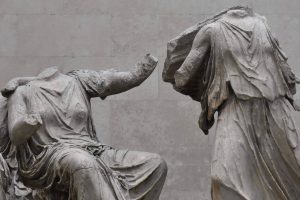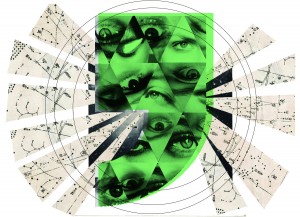
The Church of Extreme Body Modification
by Rose Roberts | November 27, 2014
In recent years, body modification has become increasingly common and widely accepted. A fifth of Britons have tattoos and even more have piercings. For the members of the Church of Body Modification, such body art has a more spiritual significance. The Church is based and legally recognised in the United States, and its official mission is to “educate, inspire, and to help lead our members along a path of spiritual body modification”. The Church believes that the body, soul and mind are one entity. Modification and embracing the consequent pain strengthens the connection between the three and leads to religious enlightenment
The Church was founded in 2000. As befits a religion that has come about in the modern times, it is largely based online. The church runs an active twitter feed (@churchofbodmod), Facebook page, online forum, and online classes that take place the third Sunday of every month. Through its presence on social networks, the Church has gained over 3500 members. However, the religion does not only exist in the online sphere. Members periodically meet up in each other’s houses or even in public parks to participate in modification rituals. These include activities such as fire walking, fasting and “flesh-hanging”, which as the name suggests involves being suspended in air from metal hooks inserted into the skin. The church is very careful over the safety of its members during these rituals. To ensure that no one suffers a hook ripping through their torso when they are suspended mid-air, there will be someone present to administer medical care, as well as piercers and technicians in charge of the rigging. According to David, a Church minister in San Diego, these rituals aim to achieve “the feeling that I am part of a bigger force in universe”. Despite personally “hating” pain, David’s favourite ritual is cheek spearing. This involves a metal rod being inserted through the cheeks, which looks and sounds pretty uncomfortable.
The Church of Body Modification’s internet forum is one of the most positive and friendly discussion spaces I have come across on the internet. Members share stories of their experiences and pose questions about the technical issues related to their modifications. Posts from new members are flooded with welcomes, smiley faces and motivational quotes. For example, a new follower nervous about undergoing a tongue splitting modification is told “welcome!” and that “bravery is not an absence of fear, it is being afraid and persevering regardless.” Conversations extend discussion of the physicality of modification to touch on more personal subjects, such as financial troubles and the discrimination facing the church members. In one conversation members discussed the difficulties of struggling with multiple sclerosis.
The concept of modification as part of religion and spirituality is nothing new. Kavadi is a ritual performed as worship to the Hindu god of war Lord Murugan and bears resemblance to the Church’s “flesh hanging” rituals. The ceremony involves a procession during which followers support a decorated bamboo arch, as well as the piercing of the worshippers’ bodies with hooks and skewering of their tongues and cheeks. Like church members who engage in “flesh-hanging”, participants of Kavadi believe the spiritual benefits gained from the ceremony outweigh their pain.
Critics have argued that members use the church as an excuse to keep their body modifications without losing their jobs. However, the Church makes clear that it cannot be used as loophole to prevent members from being fired when the individual has no religious intent. In 2010, 14-year-old Church of Body Modification member Ariana Iacono was suspended from her North Carolina school for wearing a nose stud that contravened the dress code. Ariana argued that wearing her stud was an essential part of her religion and the American Civil Liberties Union filed a lawsuit against the school system on her behalf. The lawsuit was successful and Ariana was able to keep in her piercing. Not all lawsuits by members of the Church have been so successful. In 2002, one member took her employers Costco to court over over her eyebrow piercing, but the court decided her religious beliefs did not require her to keep in the piercing at all times.It is easy to rationally argue that wearing a piercing for religious reasons in the work place is no different to wearing any other religious symbol.
Though the concept of the Church may seem incongruous with common expectations of organised religion, its basic creed is familiar. Like most religions, the Church aims to achieve a spiritual connection with a “higher power” and to foster a sense of belonging, though its means of doing so are somewhat unconventional.




